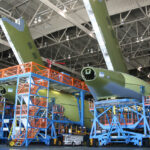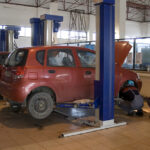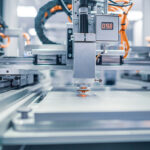CNC (Computer Numerical Control) machining has revolutionised manufacturing across numerous industries, with aerospace being one of the most impacted sectors.
Known for its precision, versatility, and efficiency, CNC machining is integral to producing aerospace components that meet stringent safety and performance standards. This article delves into the importance of CNC machining in the aerospace industry, exploring its applications, advantages, and the future trends shaping its evolution.
Importance of CNC Machining in Aerospace
The aerospace industry demands the highest levels of precision and reliability due to the critical nature of its components. Whether for commercial aircraft, military jets, or space exploration vehicles, the parts used must perform flawlessly under extreme conditions. CNC machining meets these rigorous standards through its ability to produce complex, high-precision components consistently and efficiently.
Key Applications of CNC Machining in Aerospace
1. Engine Components
- Turbine Blades and Discs: CNC machining is used to manufacture turbine blades and discs, which require exceptional precision to withstand high temperatures and rotational speeds.
- Combustion Chamber Parts: These components must endure extreme heat and pressure, necessitating materials like titanium and nickel alloys, which are expertly machined using CNC techniques.
2. Structural Components
- Airframe Parts: CNC machining produces critical airframe components that require high strength-to-weight ratios and precision to ensure aircraft safety and performance.
- Landing Gear: CNC machining is crucial for creating landing gear components that can withstand the significant stresses of takeoff, landing, and taxiing.
3. Interior Components
- Seating and Cabin Structures: Precision machining ensures that seating, overhead bins, and other cabin structures meet design and safety specifications while maintaining lightweight characteristics.
4. Avionics
- Electronic Housings: CNC machining fabricates housings for avionics equipment, providing the necessary protection for sensitive electronic components.
Advantages of CNC Machining in Aerospace
1. Precision and Accuracy
- High Tolerance Levels: CNC machines can achieve tolerances, ensuring that components fit perfectly and function correctly in demanding aerospace applications.
- Complex Geometries: CNC machining allows for the creation of intricate shapes and designs that are often required in aerospace parts.
2. Material Versatility
- High-Performance Materials: The aerospace industry often uses advanced materials such as titanium, aluminium, and nickel alloys. CNC machining is well-suited to handle these tough materials, ensuring optimal strength and performance.
- Composite Materials: CNC machining is also used to fabricate parts from composite materials, which are increasingly popular in aerospace for their lightweight and high-strength properties.
3. Efficiency and Consistency
- Automated Production: CNC machines operate with high efficiency, reducing production times and labour costs. They can run continuously, ensuring consistent quality across large production runs.
- Repeatability: Once a CNC program is developed, it can be reused to produce identical parts with minimal variation, ensuring reliability and standardisation.
CNC Machining Processes in Aerospace
1. Milling
CNC milling machines move along the X, Y, and Z linear axes and A and B rotational axes to create complex geometries and intricate designs.
2. Turning
CNC turning is a form of subtractive machining that involves the removal of material to create the desired shape.
Precision turning is used to produce cylindrical parts with high precision and smooth finishes.
Future Trends in CNC Machining for Aerospace
1. Advanced Materials:
- Next-Generation Alloys: The development of new alloys and composite materials will drive advancements in CNC machining techniques to accommodate these materials’ unique properties.
- Additive Manufacturing Integration: Combining CNC machining with additive manufacturing (3D printing) can enhance production capabilities, enabling more complex and lightweight designs.
2. Digitalisation and Industry 4.0
- Smart Factories: The integration of IoT (Internet of Things) and AI (Artificial Intelligence) in CNC machining processes will enhance efficiency, predictive maintenance, and real-time monitoring.
- Digital Twins: Creating digital twins of CNC-machined components allows for virtual testing and optimisation, reducing the need for physical prototypes.
3. Sustainability
- Eco-Friendly Machining: Advances in cutting tool technology and lubrication methods will reduce environmental impact and improve sustainability in CNC machining processes.
- Material Recycling: Improved recycling methods for aerospace-grade materials will contribute to a more circular economy in the industry.
4. Automation and Robotics:
- Robotic Integration: The use of robots for loading and unloading parts, tool changes, and other repetitive tasks will further enhance the efficiency and precision of CNC machining.
Conclusion
CNC machining is a cornerstone of the aerospace industry, providing the precision, reliability, and efficiency required to produce critical components for aircraft and spacecraft. Its ability to handle complex geometries, advanced materials, and high tolerance levels makes it indispensable in aerospace manufacturing. As technology advances, the integration of digitalisation, automation, and new materials will continue to push the boundaries of what CNC machining can achieve, driving innovation and maintaining the aerospace industry’s high standards of safety and performance.
At Monster Builder, we offer CNC machining, 3D printing, and sheet metal fabrication services. Reach out to us for more information.






